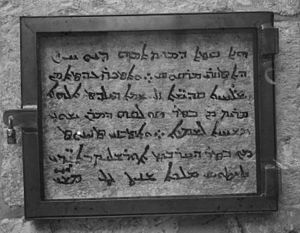How would you like to host a church in your home? A number of women in the early years of the church opened their homes for prayer, study, and worship, even when it was not easy to follow Jesus Christ. Because there were no official meeting places for Christians, they met in various homes to worship and share their faith in Jesus Christ.
Also, Christians met privately because Jewish and Roman authorities persecuted many of the faithful (Acts 8:3, Acts 12). Stephen was murdered for his bold declaration of truth. The apostle James was beheaded as a leader of the church in Jerusalem. Christians in the early years of the church “were unprotected by any civil power, and exposed, therefore, to the full blaze and rage of persecution. That the church was not destroyed, was owing to the protection of God.”[1]
Courage of hospitality in troubled times
Now about that time Herod the king stretched out his hand to harass some from the church. Then he killed James the brother of John with the sword. And because he saw that it pleased the Jews, he proceeded further to seize Peter also…[and] put him in prison (Acts 12:1-4).
Although it was at times dangerous for Christians in Jerusalem, Mary (the mother of John Mark) made her home a meeting place for believers. Mary’s house may have been where Jesus and the twelve disciples kept the Passover.[2] Tradition says the upper room of her home may have been where Jesus’ followers received the Holy Spirit on Pentecost (Acts 1:5, 12-13). After the apostle Peter’s miraculous release from prison, he made his way to Mary’s house to inform the believers who prayed for him there (Acts 12:5-16).
How long were Christians able to meet in Mary’s home? Was she among the believers “scattered throughout the regions of Judea and Samaria” because of persecution? (Acts 8:1) Scripture doesn’t say what happened to Mary. Tourists in Jerusalem today can visit what is thought to be the location of her house. The 800-year-old St. Mark’s Syrian Orthodox Church is said “to be built over a much older structure.”[3] Visitors are told to “look for the ancient inscription carved into a stone wall, written in ancient Syriac language and said to date to the sixth century CE, the inscription states: This is the house of Mary, mother of John Mark.”[4]
Believers Hosting Churches
After Paul established congregations in Asia Minor, men and women converted to the faith, met in one another’s homes. Paul’s friends Priscilla and Aquila hosted a church in their home in Ephesus (1 Cor. 16:19) and later in Rome (Rom. 16:3-5). Paul mentioned facing a crisis in Ephesus and that Priscilla and Aquila saved his life. “Greet Priscilla and Aquila, my fellow workers in Christ Jesus, who risked their own necks for my life, to whom not only I give thanks, but also all the churches of the Gentiles” (Romans 16:3-4).
Lydia, a successful businesswoman in Philippi, opened her home, which became “perhaps the first Christian church being formed therein [in Philippi].”[5] When Paul was miraculously released from prison, he went to Lydia’s home to encourage the believers there (Acts 16:40).
It is not clear if the host of the church in Laodicea was Nympha, a woman, or Nymphas, a man. “Most scholars agree that this person was a woman, Nympha,”[6] though nothing more is said of the individual. Apphia was probably the wife of Philemon and co-host of a home church in Colossae. Archippus, thought to be Philemon’s son, was the pastor of the Christians who met in their home (Col. 4:17). Phoebe, a leading member of the church in Corinth, hosted believers in her home in Cenchrea (Rom. 16:1).
It is probable that Christians followed the pattern of home churches for at least 300 years until Constantine made Christianity his official religion. The hundreds of men and women who hosted small groups of Christians in their homes comprised a “hospitality of believers.” They played an important part in spreading the gospel and strengthening the church.—Mary Hendren
[1] Barnes’ Online Commentary, note on Acts 8:3
[2] NKJV Study Bible, Second edition, note on Acts 1:13
[3]http://www.haaretz.com/travel-in-israel/tourist-tip-of-the-day/tourist-tip-200-john-mark-s-house-1.512760
[4] Same source
[5] Herbert Lockyer, All the Women of the Bible, p. 85.
[6] Theresa M. Doyle-Nelson, in “House Churches in the New Testament,” AmericanCatholic.org.

